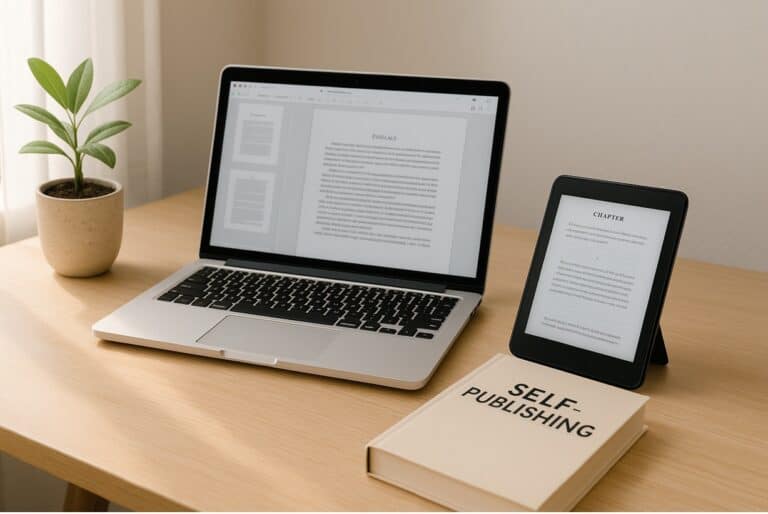Break Through Mental Gridlock—7 Proven Prompt Strategies
“You can’t edit a blank page.” — Jodi Picoult, bestselling novelist
Every writer hits a wall.
You stare at the page, fingers frozen, the blinking cursor practically mocking you. Whether you’re drafting your first book or your fifth, mental gridlock (sometimes called writer’s block) can feel like a fog that rolls in overnight and refuses to lift.
But here’s the truth. You don’t have to wait for the fog to clear. You can write your way out of it.
Prompts, far from being just for beginners or warm-ups, are powerful tools. They can break mental gridlock, reignite your imagination, and reconnect you with the joy of writing. This writer’s guide introduces seven practical prompt strategies designed to beat mental gridlock fast, whether your problem is too many ideas or none at all.
Why Prompts Work (Even When You’re Stuck)
When you’re blocked by mental gridlock, the issue isn’t a lack of ideas. It’s often a result of decision fatigue, perfectionism, or emotional overload. Prompts reduce pressure by narrowing the field. They give you a direction without demanding perfection. And once you’re moving past the gridlock, the words start to loosen up.
The goal isn’t to produce something polished right away. It’s about getting moving and then using momentum to write your way back into your main project.
7 Prompt Strategies to Break Through Mental Gridlock
1. The “Worst Idea” Prompt
When the pressure to be brilliant paralyzes you, try to be terrible on purpose. Write the absolute worst version of a scene. Use clichés. Be melodramatic. Make your villain twirl a mustache. The absurdity is freeing and often hilarious. More importantly, it tricks your brain to let go of mental gridlock and into writing without fear.
Once you’re in motion, you’ll often discover lines worth saving and ideas to revise upward.
2. Answer the Character’s Text Message
Stuck in a scene? Stop writing in prose and switch to another format. Imagine one of your characters texts you. What would they say? What would you say back?
Better yet, have two characters text each other about what’s happening in the story. The casual format strips away expectations and can reveal voice, urgency, or emotion you didn’t know were missing.
3. “What’s Not Being Said?” Prompt
In any scene, something is almost always being left out. Use this prompt:
Write what the character wishes they could say but doesn’t.
Or flip it:
Write what the narrator is avoiding.
These hidden thoughts often contain the emotional tension or truth your story needs to move forward.
4. The “After the Ending” Scene
Mental gridlock often appears when you’re unsure where your story is headed. So, skip ahead.
Write a short scene that takes place after the story ends. Maybe it’s the protagonist three years later. Perhaps it’s the villain’s redemption arc. Maybe it’s a funeral or a reunion. This gives you a long-view emotional arc that can reorient your current direction.
5. Describe a Memory They Don’t Talk About
Pick any character and ask:
What memory would they never mention out loud but still shapes who they are?
This prompt taps into character depth and backstory while feeling personal and exploratory. It also tends to unlock rich, sensory writing. It’s ideal when you feel like your prose is flat.
6. Start with “Today, I want…”
Whether it’s your protagonist or yourself as the narrator, use this opening line:
Today, I want…
This prompt brings immediacy and clarity. It surfaces desire, which drives the plot. It also cuts through vagueness. Your character’s needs and wants will steer your next scene.
7. Break the Format: Write a Letter, Poem, or Obituary
Shake up your routine with a format twist. If your manuscript is bogging you down, switch to something unexpected:
- Write a letter from one character to another
- Write a poem your protagonist might read or write
- Write a journal entry or an obituary
These formats bypass your internal editor and often generate unexpected insight or emotional depth.
Quick Win: The 10-Minute Prompt Reset
Try this the next time you feel blocked:
- Pick any prompt above (at random if needed)
- Set a timer for 10 minutes
- Don’t stop writing until the timer dings
- When you finish, highlight anything worth keeping
- Use it to reenter your current project or start something fresh
This routine gives your brain a structured “release valve” and keeps the writing habit alive, even during tough spells.
Wrap-Up: Prompts Aren’t Just Recovery—They’re Discovery
Prompts are not backup plans. They’re creative catalysts. They take the pressure off “writing the right thing” and instead focus on writing something.
That’s the real secret to breaking through mental gridlock: forward motion.
By incorporating prompts into your regular writing practice, not just your rescue plan, you’ll not only recover faster from stuck days. You may find you get stuck a lot less often. But don’t just read these strategies. Test them out.
Choose one prompt and try it today. Then print the checklist below and keep it near your desk, so the next time resistance shows up, you’ve already got your antidote.
We trust you’ve found this writer’s guide both enlightening and inspirational. It’s designed to equip you with the tools and insights to bolster your success as a burgeoning author.
The path of writing is one filled with ceaseless learning and enhancement. You are not expected to tread this path solo. We’re thrilled to accompany you on this journey, offering support and motivation at every turn. Our objective is to deliver foundational knowledge and pragmatic guidance, enabling you to traverse the literary landscape with amplified confidence.
For more guidance, see other guides in this series. We suggest starting with Boosting Mental Focus—5 Hacks for New Indie Authors. You might also like AI Empowers New Indie Authors: 5 Best Hacks.
How can we help? To let us know, please fill out our Contact form. Happy writing!
If you have a draft you want to publish with the help of AI, read, Is Your Book Ready to Self-Publish? Lastly, for help writing a non-fiction book, read Write Your First Non-Fiction eBook: a 30-Day Workbook for Getting It Done.
Beat Writer’s Block with Prompt Power Checklist
| Prompt Strategy | Try This When… | Tried It |
| Worst Idea Prompt | You’re paralyzed by perfectionism | ☐ |
| Character Texts | Your dialogue feels flat or forced | ☐ |
| What’s Not Said | A scene feels emotionally empty | ☐ |
| After the Ending | You’re unsure where the story is going | ☐ |
| Untold Memory | Your character feels one-dimensional | ☐ |
| Today I Want… | Your scene lacks urgency or direction | ☐ |
| Letter, Poem, or Obituary | Your structure feels stale | ☐ |
Bonus: Do one 10-minute timed prompt session this week and highlight at least one usable line.
#

